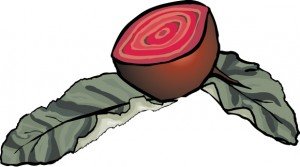Weight Control Without Hunger Foods
 The following foods are the lowest in calorie density. If you fill up on mostly fruits, vegetables, high-fiber carbs and cooked grains, you will fill up on fewer calories than if your diet consists of low-fiber, high-fat and high-sugar foods like pizza, burgers, french fries, cinnamon rolls, candy bars, potato chips, cookies and many other American favorites.Think salads, fruit, low-fat pasta, low-fat stir fry fry, baked low-fat seafood and chicken, rice and oatmeal. It is still necessary to be aware of not stuffing yourself, but you do not need to go hungry and skip meals either.Eating more of the right stuff, and getting more exercise every day will get you to your weight goals over time and keep you there. Here is a list of foods that should be your mainstay every day. Note that they are also recommended in MyPlate, too:
The following foods are the lowest in calorie density. If you fill up on mostly fruits, vegetables, high-fiber carbs and cooked grains, you will fill up on fewer calories than if your diet consists of low-fiber, high-fat and high-sugar foods like pizza, burgers, french fries, cinnamon rolls, candy bars, potato chips, cookies and many other American favorites.Think salads, fruit, low-fat pasta, low-fat stir fry fry, baked low-fat seafood and chicken, rice and oatmeal. It is still necessary to be aware of not stuffing yourself, but you do not need to go hungry and skip meals either.Eating more of the right stuff, and getting more exercise every day will get you to your weight goals over time and keep you there. Here is a list of foods that should be your mainstay every day. Note that they are also recommended in MyPlate, too:
| Category | Products | Calories per pound |
| Vegetables | all | 65-195 |
| Fruits | all except avocado | 135-425 |
| Nonfat dairy | skim milk, nonfat yogurt | 180-400 |
| Egg whites | whites, egg substitute | 226 |
| High-fiber carbs | potato, peas, beans, legumes, yams, corn | 300-600 |
| Cooked grains | pasta, rice barley, cooked cereals | 300-600 |
| Lean protein | lean poultry, lean fish, shellfish | 450-650 |
What is not on this list?Foods that are high in fat and or sugar that are calorie-dense and low in fiber. Examples include pizza, French fries, fried foods, burgers, fatty meats, most high-fat sauces and dressings, cookies, crackers, chips, baked goods, cheesecake, pie, cream sauces, cheese, ice cream, etc. These are the items that need to be put in the “occasional treat with portion control” category.Research shows that the higher you go in calorie density, the more you need to eat to feel full. So foods like croissants and cookies are like a double whammy because you are eating foods that are high in calories and then you need to eat more of them to feel full!For more information, visit ChooseMyPlate.gov or learn about the DASH diet at www.nhlbi.nih.gov.More Light and Low-cal ideas:• Low-fat salad - pile on the greens, vegetables and vinegar; beware of fatty additions like cheese, croutons, fried meat, fatty dressing, eggs and mayonnaise-dressed items.• Fresh and steamed veggies• Fresh fruit - should be your main snack and dessert staple• Baked potatoes and sweet potatoes - keep toppings low in fat• Pasta - keep it low in fat• Rice dishes - keep them low in fat• Low-fat yogurt - look for light versions• Low-fat poultry and fish


